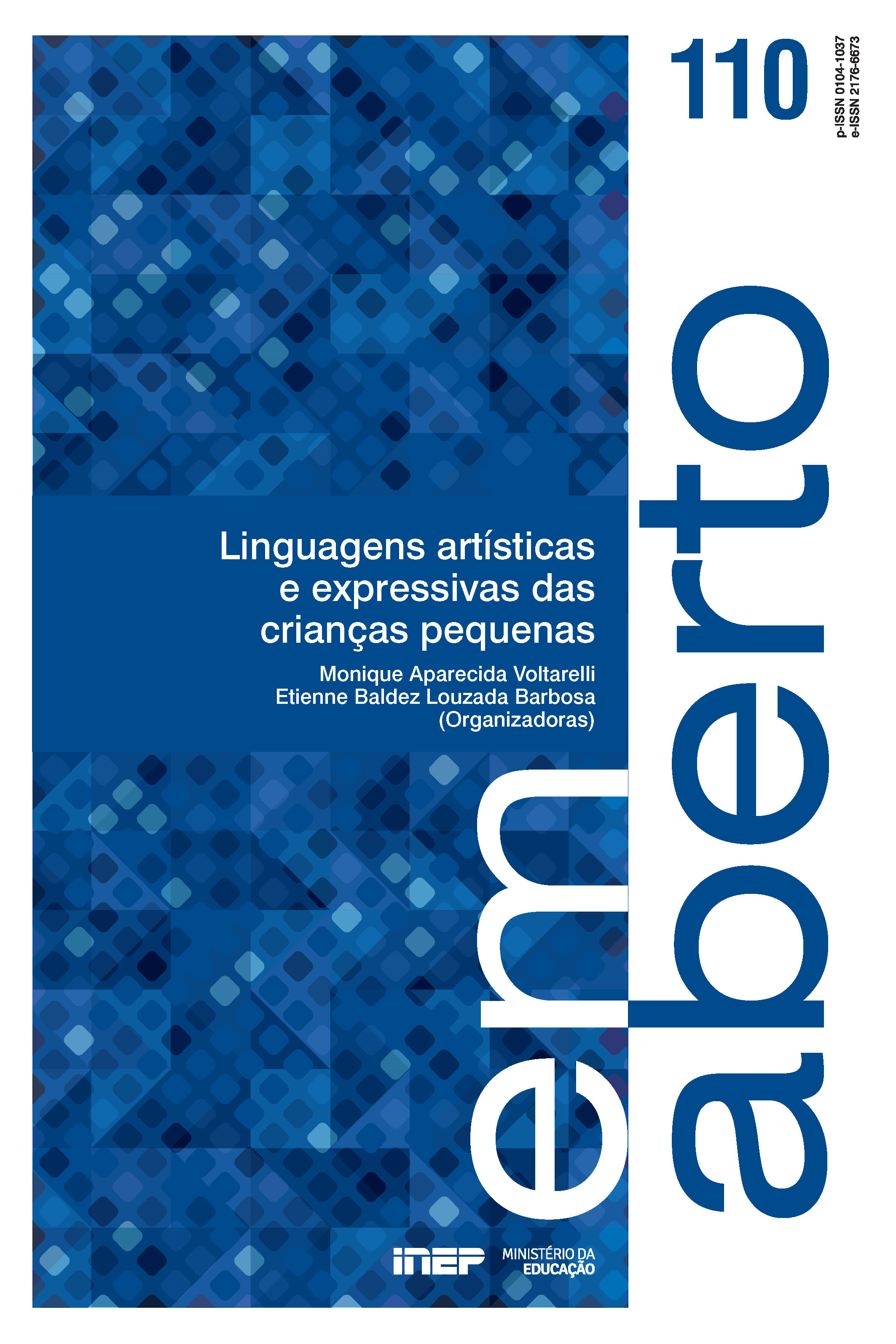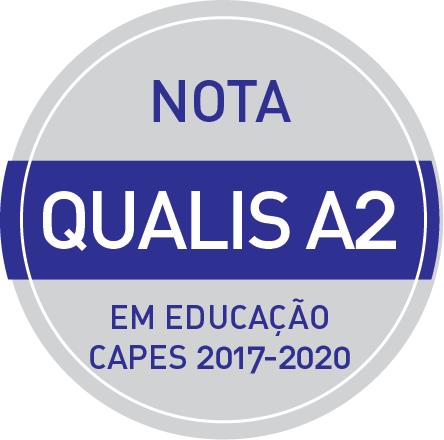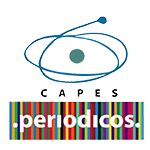The The “light” weight of the Mignon Theater
Abstract
The Mignon Theater is a communication form that highlights the theatrical aspects of the educational dimension. It is simultaneously a “light”, expressive, simple and complex theater, bearing all key characteristics that have marked theater since its origins. Mignon Theater is a ludic theater of life based on two fundamental points (it proceeds calmly and in accordance to the rules of the dramatic game), having four characteristics (it is an à la carte, multi-room, craft, infinite theater). Those who practice it accompany the narration (of a story, a thought, a psychological character) with subtle and imperceptible elements, so that it has “a weightless gravity”. Mignon Theater brings those who practice it closer to that which directors and actors of contemporary theater trends search. Mignon Theater is based on the ludic dimension of the educational relationship. Playfulness, life and theater intertwine and create a theatrical action that is both directed to others and concerned to themselves. The adult who uses the theatrical game is within the scope of what, in respect to children, is called a “fictional game”.
Downloads
References
ALASJARVI, U. Il gioco drammatico: proposte pratiche per usare il tempo con i bambini. Torino: Musolini, 1978.
ALLEGRI, L. Prima lezione sul teatro. Roma-Bari: Editori Laterza, 2012.
ARTAUD, A. L’ombilic des limbes. Paris: Gallimard, 1968.
BATESON, G. Verso un’ecologia della mente. Milano: Adelphi, 1976.
BENEVENTI, P. Introduzione alla storia del teatro-ragazzi. Firenze: La Casa Usher, 1994. Falta a p. da citação na p. 6.
BROOK, P. La porta aperta. Torino: Einaudi, 1993.
CAILLOIS, R. I giochi e gli uomini: la maschera e la vertigine. Milano: Nuovo Portico Bompiani, 1981.
CALVINO, I. Lezioni americane: sei proposte per il prossimo millennio. Milano: Mondadori, 1993.
CARSE, J. P. Giochi finiti e infiniti: la vita come gioco e come possibilità. Milano: Mondadori, 1987.
Ceméa ver Fédération International des Ceméa (Ficeméa)
CHANCEREL, L. Les jeux dramatiques: éléments d’un méthode. Paris: Les Éditions du Cerf, 1936.
DEWEY, J. How we think: a restatement of the relation of reflective thinking to the educative process. Boston: Heat, 1933.
DEWEY, J. L’arte come esperienza. Firenze: La Nuova Italia, [1934] 1953. DULLIN, C. Souvenir et notes de travail d’un acteur. Paris: Odette Lieutier, 1946.
DULLIN, C. La ricerca degli Dei: pedagogia di attore e professione di teatro. Firenze: La Casa Usher, 2005.
FÉDÉRATION INTERNATIONALE DES CEMÉA (Ficeméa). Ficeméa: le projet politique. Bruxelles, Bélgique, [s.d.]. Disponible en: <https://ficemea.org/>. Accès en: 24 févr. 2021.
FERRIÈRE, A. L’educazione attiva. Firenze: Marzocco, [1920] 1947. FINK, E. Il gioco come simbolo del mondo. Milano: Lerici, 1969.
GOETHE, J. W. Gli anni di apprendistato di Wilhelm Meister. A cura di Anita Rho, Emilio Castellani. Milano: Adelphi, [1795] 1974.
GROTOWSKI, J. Per un teatro povero. Roma: Bulzoni, 1968. HUIZINGA, J. Homo ludens. Torino: Einaudi, [1939] 1979.
MANFERRARI, M.; FABRETTI, R. Un alfabeto di 21 lettere: appunti per un percorso tra il nido ed il teatro. Bologna: Pendagron, 2006.
MAZZAGLIA, R. Virgilio Sieni: archeologia di un pensiero coreografico. Napoli: Editoria & Spettacolo, 2015.
OBERLÉ, D. Le jeudramatique. Vers l’Educationi Nouvelle, Paris, n. 355, p. 32, 1981.
OLIVA, G. Educazione alla teatralità: il gioco drammatico. Arona: XY.IT Editore, 2010.
PIAGET, J. La formazione del simbolo nel bambino. Firenze: La Nuova Italia, 1974.
PITTARELLI, V. Io sono Griot: la figura del Griot tra tradizione e modernità. [S. l.: S. n.], 2017. E-book.
STACCIOLI, G. Ludobiografia: raccontare e raccontarsi con il gioco. Roma: Carocci, 2010.
STACCIOLI, G. Il teatro in tasca: itinerari nel Teatro Mignon. Faenza: Kaleidos, 2019.
STANISLAVSKIJ, K. S. L’attore creativo: conversazioni al teatro Bol’soi (1918- 1922). A cura di Fabrizi Cruciani e Clelia Falletti. Firenze: La Casa Usher, 1980.
VYGOTSKY, L. S. Il ruolo del gioco nello sviluppo mentale del bambino. In: BRUNER, J. S.; JOLLY, A.; SYLVIA, K. Gioco: il gioco in un mondo di simboli. Roma: Armando Editore, 1981. v. 4, p. 657-678.
WINNICOTT, D. W. Gioco e realtà. Roma: Armando Editore, 1974.
Copyright (c) 2021 Em Aberto

This work is licensed under a Creative Commons Attribution-NonCommercial 4.0 International License.
These are the terms of this Copyright Notice:
- I declare that I permanently forfeit in favor of the National Institute of Educational Studies and Research (INEP) all rights related to:
-
- editing, publication, reproduction, and distribution of the work;
- publication through digital and electronic media;
- translation of the work to any language;
- updating, re-printing, adaptation, and compression of the work;
- uploading of work in the publishing platform of INEP;
- divulging complete or parts of work through the World Wide Web (internet), whether in Brazil or foreign countries;
- authorization of third parties to execute any of the acts mentioned before.
- I explicitly declare that I am solely responsible for the opinions expressed in the work, and its publication does not violate the rights of third parties.
- I declare that the nature of said work is one of pro bono publico and, as such, I forfeit the right to any compensation regarding ownership rights granted.
- I authorize spelling and grammatical review of the manuscript, provided that the content and opinions therein remain unchanged.












